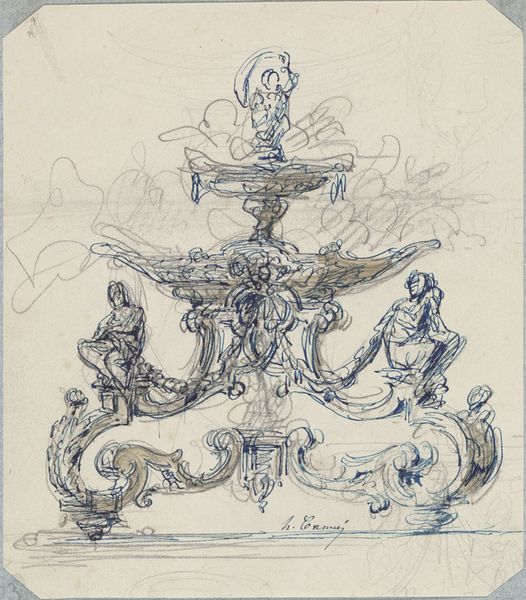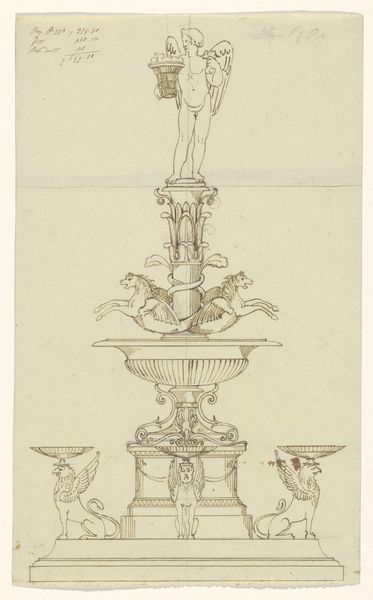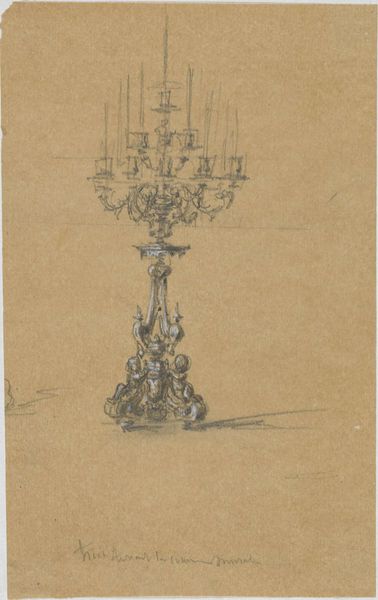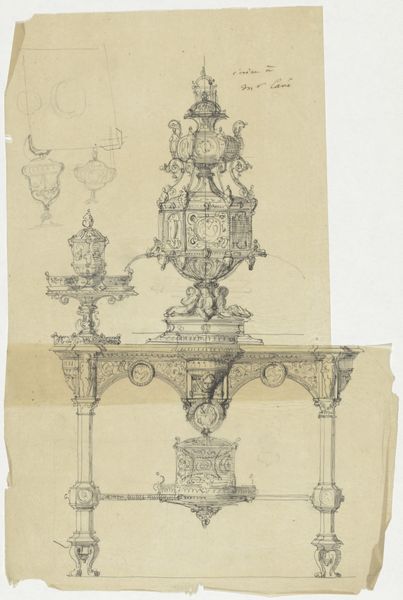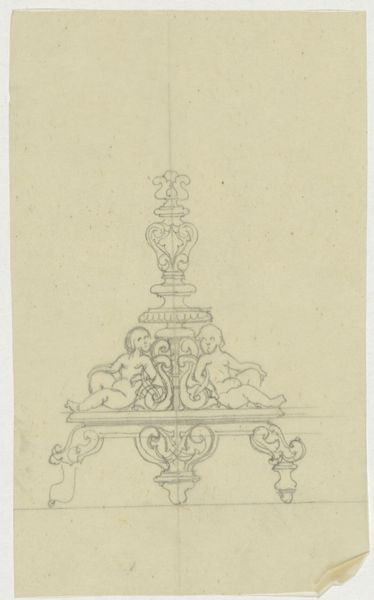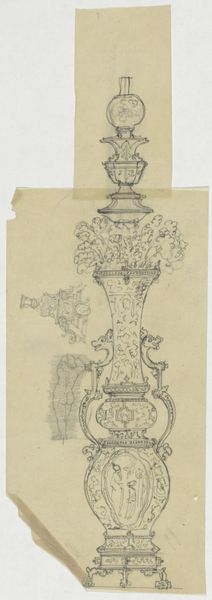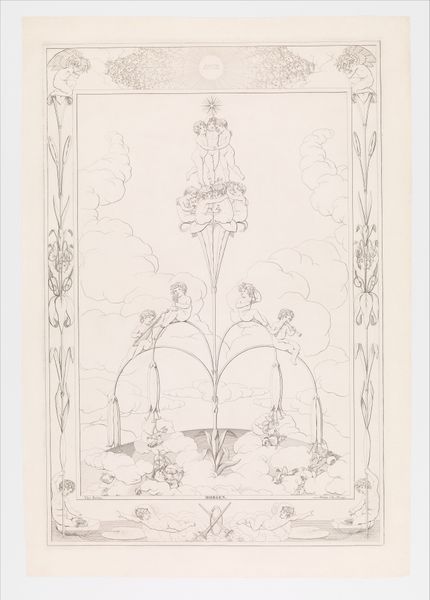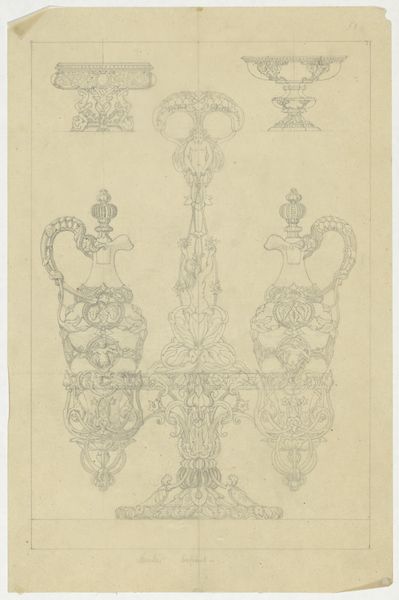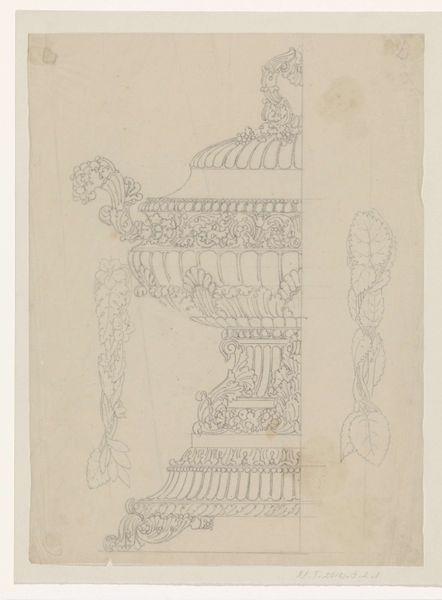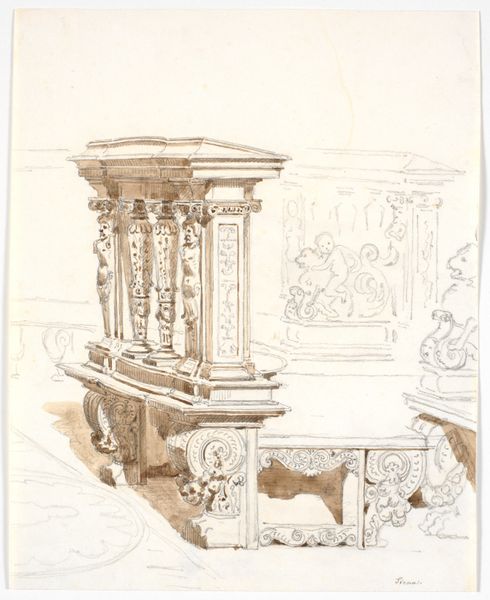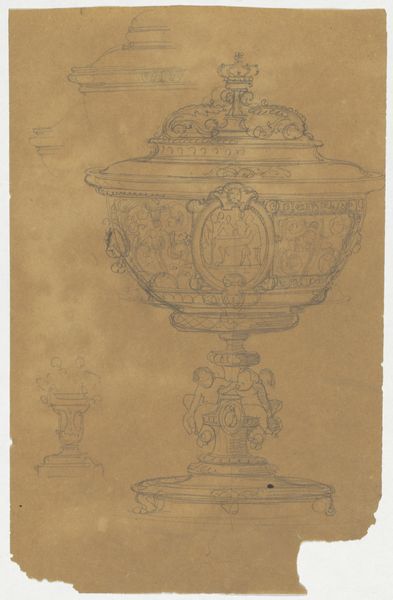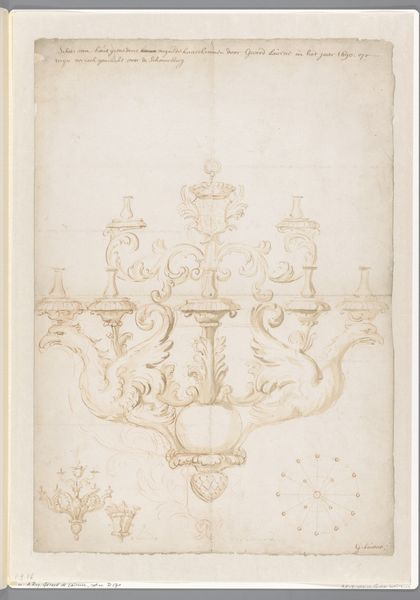
Album with Designs for Ornament and Various Objects 1745 - 1788
0:00
0:00
drawing, print, pencil
#
drawing
#
neoclassicism
# print
#
pencil sketch
#
geometric
#
pencil
#
cityscape
Dimensions: Overall: 10 3/8 x 7 5/8 x 1 in. (26.4 x 19.4 x 2.5 cm.)
Copyright: Public Domain
Curator: This ethereal sketch before us is titled "Album with Designs for Ornament and Various Objects." The artist, Gilles Paul Cauvet, executed it sometime between 1745 and 1788. Editor: Whoa, dreamy! It's like a half-remembered vision of a Roman bathhouse, all flowing water and curvy shapes. A pencil poem! Curator: Cauvet, working during the rise of Neoclassicism, presents us here with a delicate rendering that likely served as a preliminary design. We can interpret its aesthetic in the context of 18th-century Europe, where design increasingly sought inspiration from antiquity. Editor: Makes sense. The fountain—or whatever it is—feels very architectural, almost like a stage set. I love the barely-there dolphins. It feels almost like they were scribbled on there in a rush of inspiration! Curator: Indeed, that freedom you perceive may be tied to the drawing's function. It's a design concept, intended not for display, but rather to refine ideas. Editor: You can really feel the artist thinking through the form—the tiers, the figures... It’s like watching a mind at play. Makes me wonder what the final object would have looked like! Curator: The neoclassical influence manifests in the symmetry, the idealized human forms, and the incorporation of aquatic motifs—common symbols in garden design of the period. There's also a hint of power—fountains as demonstrations of engineering and wealth. Editor: I suppose. It's just...I keep getting drawn back to the softness. All those hazy lines. Even with those sculpted figures holding everything up, the overall mood is so light. It's as if Cauvet’s about to blow a kiss of breath to it, sending the image to water dust. Curator: The tension between the solidity of classical form and the lightness of the sketch does invite questions. It highlights how Neoclassicism was also about idealization and aesthetic refinement rather than sheer replication. Editor: Well, I could stare at this ghostly fountain all day. It's a gentle nudge to imagine, design and feel like an 18th-century visionary! Curator: Agreed. Cauvet's creation provides an opportunity to consider how artists translate cultural values and theoretical ideals into visual forms that transcend their time.
Comments
No comments
Be the first to comment and join the conversation on the ultimate creative platform.
